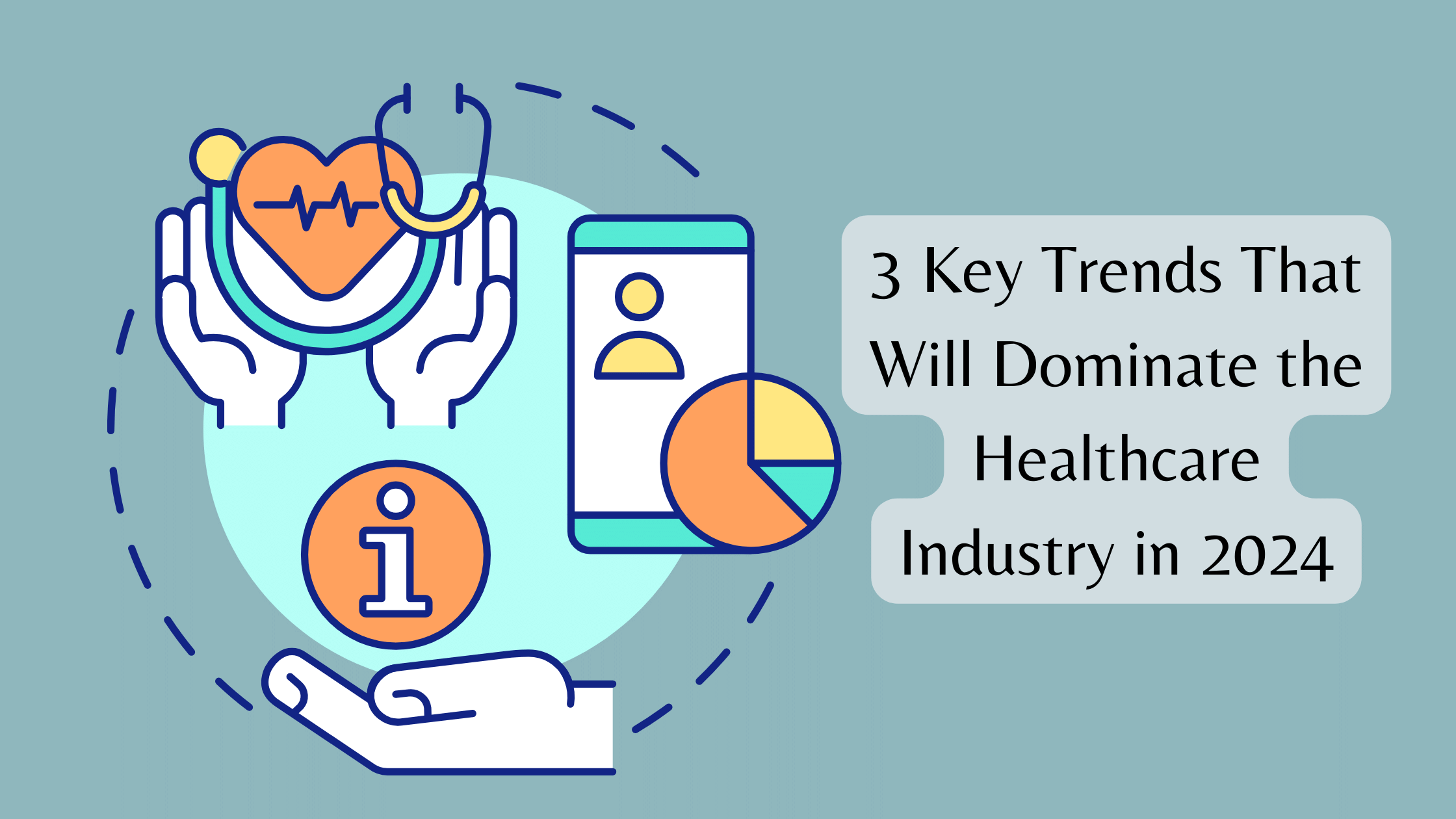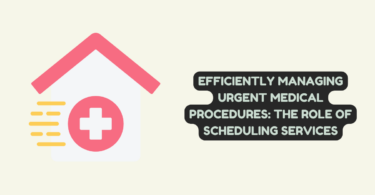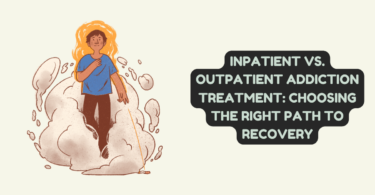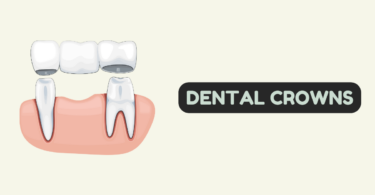
Healthcare Industry
The dawn of 2024 has brought with it a new era of innovation, transformation, and unparalleled possibilities. As we navigate through a world shaped by global challenges and technological breakthroughs, the healthcare industry stands at the forefront of change.
In this era of unprecedented change, the stage is set for healthcare to transcend boundaries, break barriers, and unlock the full spectrum of human potential.
According to an article by Forbes, artificial intelligence (AI) is likely to dramatically change the technological aspects of the industry, from the processes of developing medicines to treating patients.
Beyond technology, the shift from reactive to preventative healthcare is another powerful change we can look forward to. The objective behind this change is to prevent the aging population from becoming an overwhelming burden on the global healthcare systems.
Join us as we explore 3 key trends that will not only dominate the healthcare industry in the coming months, but also revolutionize the way healthcare is accessed, delivered, and experienced.
IoT in Healthcare
A MarketDigits study on the IoT medical devices market revealed that it was evaluated at USD 41.5 billion in 2023 and is projected to reach USD 313.63 billion by 2030, growing at a CAGR of 33.5% in the period.
The study also claimed North America to be the dominant force in the IoT market. Factors like the wider adoption of IT healthcare solutions and a well-developed infrastructure drive the continent to this leadership.
IoT (Internet of Things) has indeed become a significant trend in the healthcare industry, fundamentally altering the way healthcare is administered and experienced. The advent of IoT is what has paved the way for remote patient monitoring, about which you’ll learn more below.
To add to that, IoT-generated data offers invaluable insights into patients’ health status, behaviors, and treatment responses. By harnessing this data, healthcare professionals can create tailored treatment plans for individual patients. This personalized approach not only improves the outcomes but also enhances patient satisfaction.
The virtual ward – a central location acting as a monitoring hub for multiple patients in their homes – is an ideal example of an IoT trend in action in 2024.
Remote Patient Monitoring (RPM)
In 2024, global healthcare is shifting steadily toward value-based care models that prioritize cost-effective patient outcomes. Remote Patient Monitoring (RPM) is a solution that first saw prominence in the outbreak of COVID-19 when the demand for remote healthcare solutions was at its peak.
Following the pandemic, the popularity of RPMs grew among the aging population – who face the rising prevalence of chronic diseases. To meet these growing demands, a large number of healthcare facilities have started offering virtual healthcare services around the globe. 2024 is likely to see the rise of various platforms providing remote healthcare solutions by designing a virtual patient management system.
CoachCare notes that the objective of these solutions is to provide a complete support service that can monitored remotely.
Generative AI in Healthcare
Generative AI has been bringing about transformation across multiple industries, and healthcare happens to be one of them.
In McKinsey & Company report on tackling healthcare’s burdens with Generative AI published in July 2023, generative AI was recognized as “a meaningful new tool.” The report also claimed that it could help unlock $1 trillion of improvement potential in the healthcare industry.
This can be done by automating error-prone and tedious operational works usually taken care of by the hospital staff and physicians. Generative AI can bring years of clinical data to the fingertips of a physician within seconds, thereby modernizing the infrastructure of health systems.
Generative AI also plays a significant role in the designing of virtual patient management software alongside IoT. It is the combination of these technologies that makes remote healthcare thrive.
Beyond automating clinical documentation, generative AI can also assist with drug discovery and development, generate personalized treatment plans, and facilitate medical training and simulation.
Most of these technologies are already in their developmental or testing phase. Before 2024 ends, you’re very likely to witness their widespread use in healthcare facilities.
Telehealthcare
Telehealth is set to revolutionize how healthcare is delivered in 2024, making it easier and more convenient for people to access medical services.
While telehealthcare is not a new concept, the technology behind it getting significantly better over time. Video conferencing platforms and remote monitoring devices are becoming more sophisticated, making virtual consultations feel almost like being in the doctor’s office.
A report from Omnia Health indicates that the global telehealth market is projected to grow by USD 55.6 billion in 2025, with a CAGR of 16.9%.
According to the report, the number of telehealth consultations for children has grown significantly in 2023, with more parents coming forward to consult for even the mildest ailments of their children. Telehealth is a beneficial prospect for patients as well as physicians. Patients save the time and effort of visiting clinics, while practitioners can minimize clinic expenses.
The integration of artificial intelligence (AI) into telehealth services is another aspect to focus on in 2024. AI algorithms can help with tasks like triaging patients, analyzing medical data, and even providing clinical decision support. This can make telehealth consultations more efficient and accurate.
FAQs
What are the types of telemedicine?
There are three major types of telemedicine, including:
- Store-and-forward
- Remote monitoring
- Real-time interactive services
What types of AI are of relevance in the healthcare industry?
According to a study exploring the potential of AI in healthcare by the National Library of Medicine, the following are the major types of AI that are currently relevant in the industry:
- Machine Learning – neural networks and deep learning
- Natural Language Processing
- Physical robots
- Rule-based expert systems
- Robotic process automation
What is another name for remote patient monitoring?
Remote patient monitoring (RPM) is also referred to as “remote physiologic monitoring” in many healthcare facilities.
To wrap things up, the key trends that we explored above represent not only advancements in technology but also a fundamental shift toward more personalized, accessible, and efficient healthcare delivery.
With the convergence of innovation, data-driven insights, and patient-centric approaches, we can expect to see a revolution in the way healthcare services are accessed and perceived in 2024.






